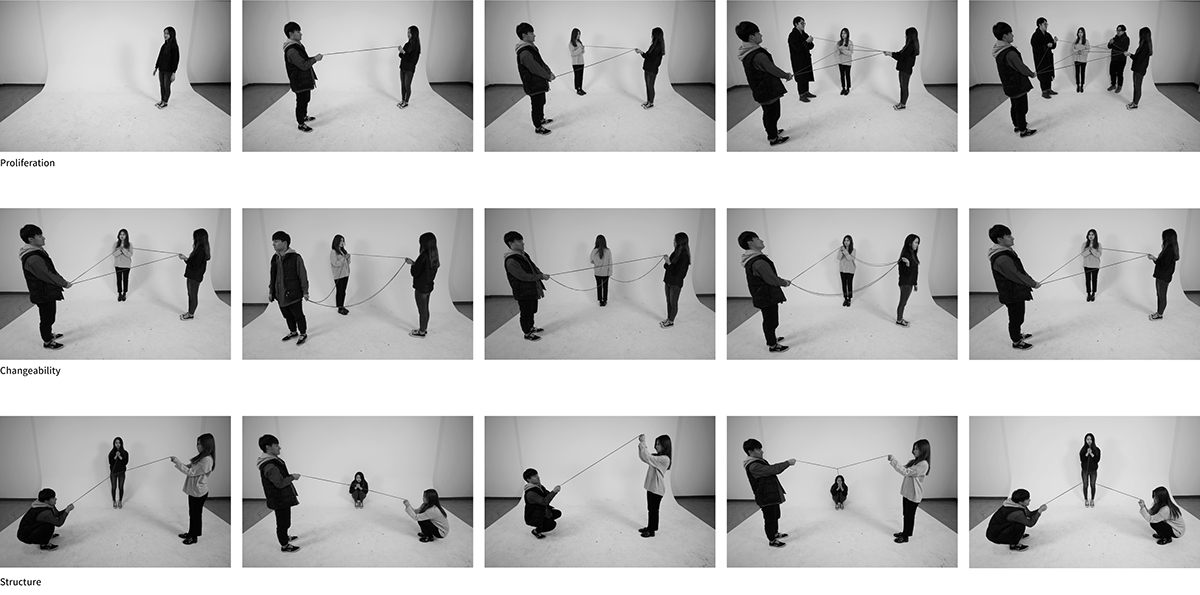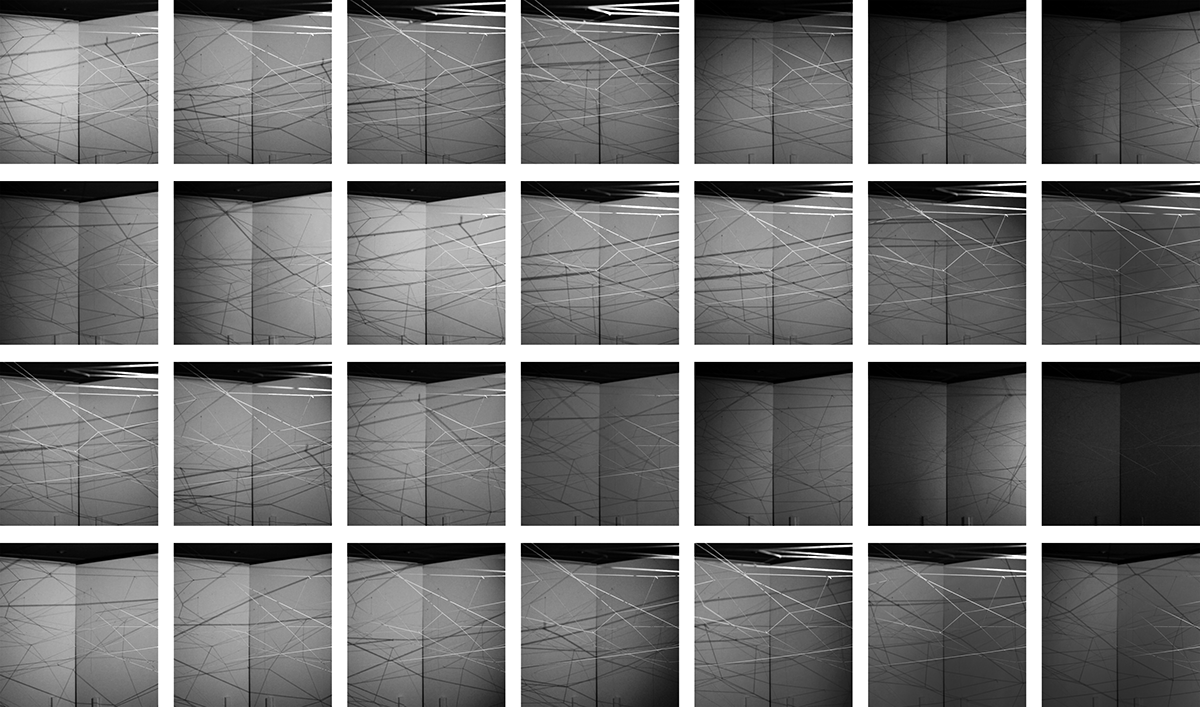Tag me
PROJECT TYPE : Installation
DATE : 2015. 5.1 ~ 5.7
STUDIO : Art Space @ SNU, Annie pedret
As representative of design major
SITE : Seoul National University
This project was conducted as part of ART SPACE @ SNU at Seoul National University. The main purpose is to create a field that allows non-artistic people to participate in artistic activities and emits the aesthetic desires that individuals had from birth. Form of Tag me is based on the process of forming and multiplying an unspecific number of relations as mentioned above.
With the universalization of mobile and PC, the role of SNS has increased dramatically in maintaining mutual communication or intimacy in modern society. Unlike the past, which requires face-to-face communication, it is now possible to communicate easily without consuming large emotions and physical strength. SNS, a product created by the World Wide Web since the 1990s, is primarily responsible for establishing and showing relationships among people who share their interests and activities, creating a greater sense of identity. Boyd & Ellison (2008), a scholar who has summarized SNS from a theoretical point of view, suggests that SNS allows individuals to: 1) establish their own personal information publicly or semi-publicly within a particular system; 2) list the users they’re conencted to, 3) browse a list of the networks that these other users are connected to, and a list of networks that other people in the system can connect to.
This TAG ME project is an attempt to show the new way of communication of SNS settled in this substituted form of the real world. The pattern in which the user 's behavior and relationship are connected is formed by the actual tag and string. The individual relationships of the participants lead to a huge network of communication, and the participants themselves create exhibitions.


Concept
The top priority in the design of the exhibition was on the involvement of viewers. The exhibition was the project carried out as part of the ART SPACE @ SNU festival for students of Seoul National University. And it aimed to promote interest in art among those what were not art students and had little opportunity to enjoy art. For this reason, the focus was not on introducing profound themes to viewers through artworks but on translating the participation of viewers into the creation of an exhibition. I wanted to create an artwork by viewers without any special performance but the appreciation of the exhibition. To do so, I as a designer decided to provide the minimum basis such as basic rules and systems in order to enable viewers to create an artwork. People develop links with others in the process of social exchange and they exchange opinions in their own texts. These links become more complicated as people build more and more relationships, which finally forms a massive network. This form of accumulated relationships could be viewed as the genes that create the the exhibition. Based on this basic idea, I managed the exhibition by setting boundaries on time and space, and the communication patterns.

Concept drawing

Diagram
This diagram is about human relationships. The nail means person and colored thread means relationship between people. When a person is alone in a space, no relationship happens. However, when there are two people an interrelationship happens. This relationship may be sometimes positive and sometimes negative. When more than three people are in one space, one may be independent with no relationship with the others, everyone may be related to each other, or mutually exclusive groups are formed. I visualized the process of this invisible relationship and tried to approximate the network shape before proceeding with the work.

Experiement of relationship

Experiment
I wanted to test what the project would be like before the exhibition by applying the schematized diagrams to a real world. As a conclusion of this experiment, I've realized that the 3D structure which the participants can connect their strings to another is important. And also, anchoring strings tight to the ground or an object would be important as there will be winds blowing or other factors which might disassemble the project. Finally, the shape and look of the project may change quite dynamically due to lights, wind and other environmental conditions.

Site model

Rules and Tools
Tag Me has a simple rule. First, visitors are provided with various types of thread and an empty paper which they can choose. Second, they would connect their own threads to the others’ threads whom they know in person. Then, the visitors write down what he/she wants to say and hang the thread. Based on this rule, the visitors participate in the exhibition and the accumulation of this action constructs this exhibition. Visitors are provided with tools such as scissors and pens before participating the exhibition. There were some unexpected reactions during the exhibition. Some people tore the tag before hanging, and some attached randomous objects like rocks or branches instead of tags. These reactions were not mentioned in the rule, but it implies the diverse artistic desires of the visitors which made the exhibition rather abundant.
There was also one more unexpected phenomenon, which was the tension of the threads that changed through out the exhibition. People mediated the thread, weakening the tension of several threads, which was similar to that of real-life social relationship. In a human relationship, concentrating on one side of the relationship weakens the others that was in less concern. The change in the tension of the thread was seen as a metaphor for the nature of human relationship.

Tag
More than 300 people gave tags and objects to 'Tag me' exhibition. This tag contained various contents. Most people have written and pictured their tags about what they want or want to achieve. The phenomenon that so many people wished for something originates from the way of origin that is common in our country. When our ancestors of our past prayed for what they wanted to achieve, they prayed with a piece of paper with the contents of their origins on the tree branches and prayed. Also, in local faith, with a desire of their wishes being heard from the heaven, people attached colorful clothes on trees and other high places. Similar phenomena has been popular with young people in modern times.
They write a wish on a lock, locks it to a barbed wire, and the traditional custom of flying a light with wishes written on it also emerged as a new cultural product. These customs also appeared in this exhibition. As mentioned above, there were many visitors who broke the ‘write something on the tag' rule. I could see people expressing themselves in their own way from passively, changing the length and shape of the tag, to actively using objects meaningful to oneself, rocks, flowers or branches instead of paper tags. There were also people who did not mediate tagging on the thread but put their tags on someone else's tags, which resembles the format of comment on the Internet. This implies that the visitors interpreted the exhibition in their own way.






Contact
Yoo, Jaehyeong
Seoul National University
BA, College of design, Industrial design
------
soulyooza@gmail.com
instagram.com/yooza_yooza
+82 10-5771-5623


